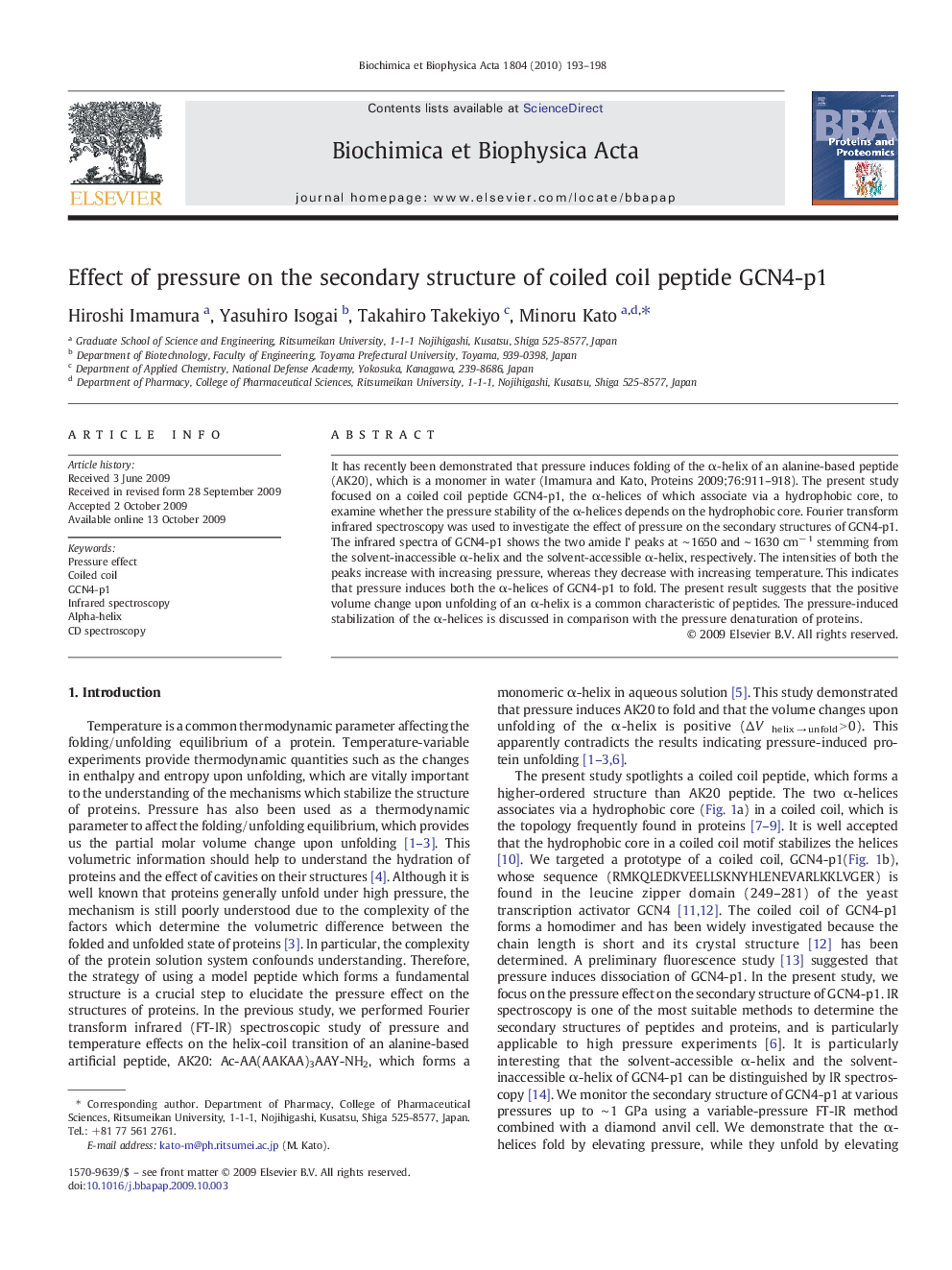| Article ID | Journal | Published Year | Pages | File Type |
|---|---|---|---|---|
| 10536975 | Biochimica et Biophysica Acta (BBA) - Proteins and Proteomics | 2010 | 6 Pages |
Abstract
It has recently been demonstrated that pressure induces folding of the α-helix of an alanine-based peptide (AK20), which is a monomer in water (Imamura and Kato, Proteins 2009;76:911-918). The present study focused on a coiled coil peptide GCN4-p1, the α-helices of which associate via a hydrophobic core, to examine whether the pressure stability of the α-helices depends on the hydrophobic core. Fourier transform infrared spectroscopy was used to investigate the effect of pressure on the secondary structures of GCN4-p1. The infrared spectra of GCN4-p1 shows the two amide I' peaks at â¼Â 1650 and â¼Â 1630 cmâ 1 stemming from the solvent-inaccessible α-helix and the solvent-accessible α-helix, respectively. The intensities of both the peaks increase with increasing pressure, whereas they decrease with increasing temperature. This indicates that pressure induces both the α-helices of GCN4-p1 to fold. The present result suggests that the positive volume change upon unfolding of an α-helix is a common characteristic of peptides. The pressure-induced stabilization of the α-helices is discussed in comparison with the pressure denaturation of proteins.
Related Topics
Physical Sciences and Engineering
Chemistry
Analytical Chemistry
Authors
Hiroshi Imamura, Yasuhiro Isogai, Takahiro Takekiyo, Minoru Kato,
